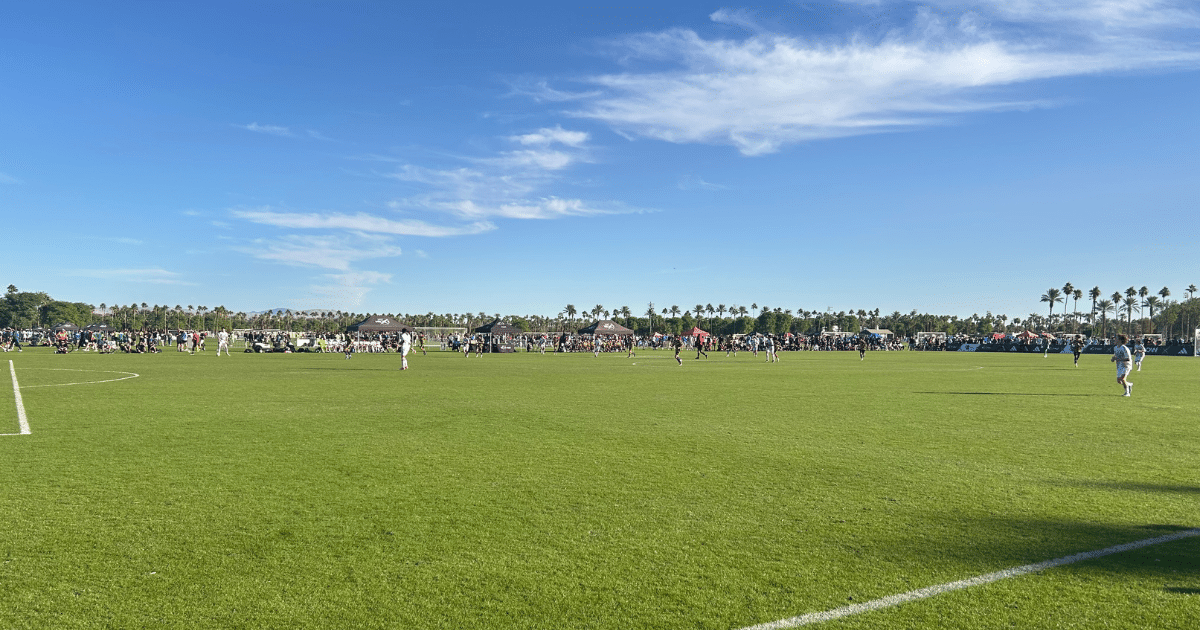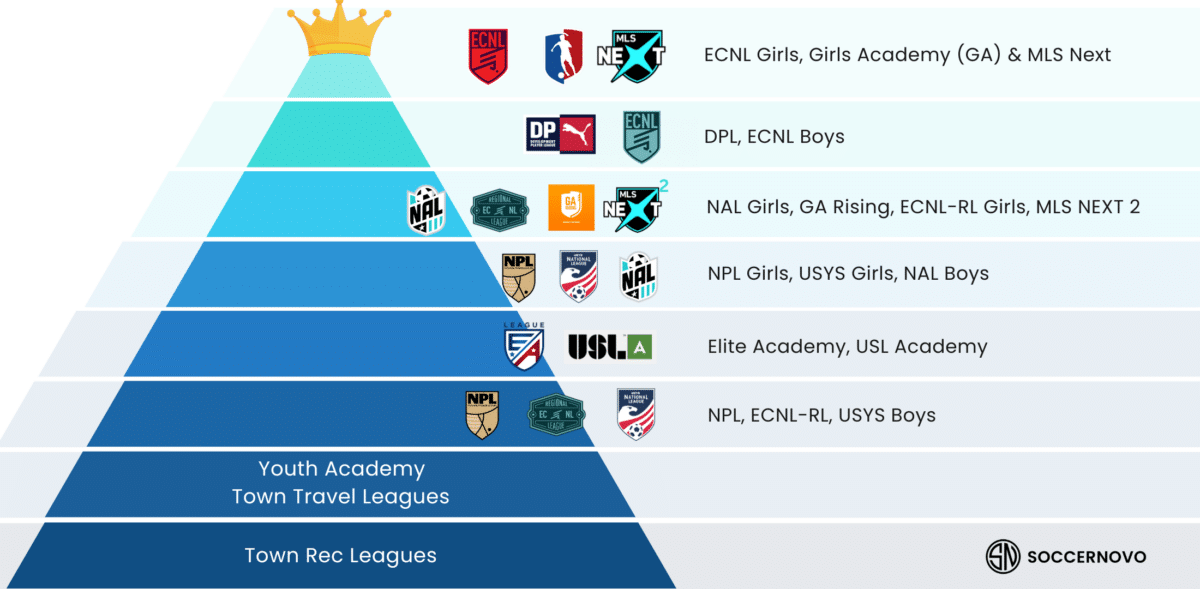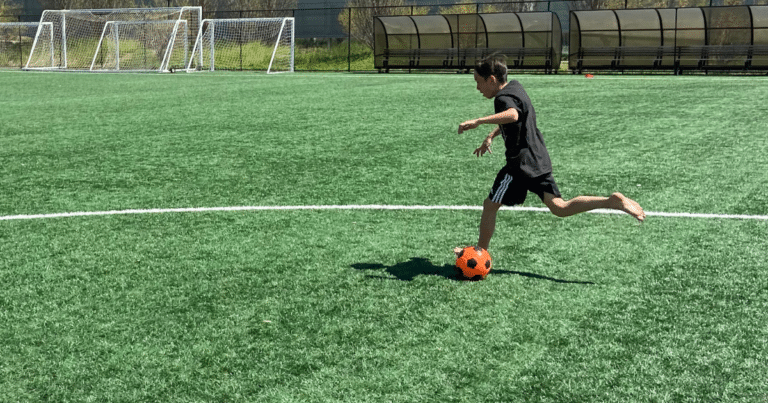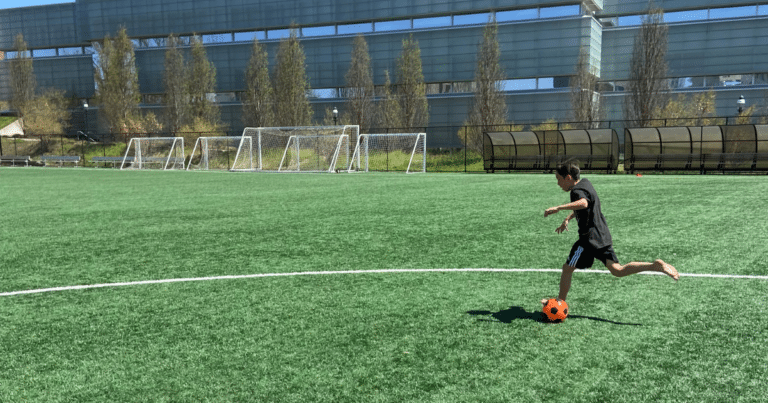What Level Should My Kid Be Playing At?

The most important thing to remember? Your child’s soccer journey is unique, and the “right” level changes as they grow and develop their skills.
TL;DR:
The Soccer Pyramid: Where Does Your Kid Fit?
Picture soccer like a big pyramid. At the bottom, you’ve got thousands of kids kicking balls around at recreational level. As you climb up, the groups get smaller and more competitive. But here’s the thing – there’s no rush to reach the top.

Recreational Soccer: The Foundation
Rec soccer is where most kids start, and honestly, it’s perfect for that. Think of it as soccer’s version of riding bikes in the neighborhood. Kids learn basic skills, make friends, and figure out if they actually like the sport. No tryouts, no travel, and usually no drama from parents on the sidelines.
The beauty of rec soccer? It’s all about having fun. Your 8-year-old isn’t going to become the next Messi because they scored five goals in rec league. But they might fall in love with the game, and that’s worth everything.
Travel Soccer: The Next Step Up
Once kids show some interest and skill, travel soccer becomes an option. This is where things get a bit more serious – there are tryouts, practices twice a week, and yes, you’ll be driving to other towns on weekends.
Travel soccer teaches kids about commitment and teamwork. The coaching is usually better than rec, and players start learning real tactics. But it should still be about development, not winning trophies that’ll collect dust in the garage.
Club Soccer: The Elite Level
At the top of the pyramid sits club soccer, and this is where things get really interesting. Only about 10% of travel players make it to the elite club level, competing in leagues like MLS NEXT, ECNL, and Girls Academy.
These leagues are only for the committed. We’re talking year-round seasons, significant travel, and serious money. But here’s what many parents don’t realize – these aren’t just for soccer prodigies who’ve been playing since they could walk.
The Late Bloomer Truth
Discouraged because you or your child isn’t in the top league? Don’t worry about it.
Here’s something that might surprise you: many of the kids dominating MLS NEXT at U17 weren’t even playing in the top league five years ago. That’s right – the 17-year-old who just got recruited to play college soccer might have been playing travel league at 12.
Kids develop at different times, both physically and mentally. The 10-year-old who seems unstoppable might plateau, while the kid who can barely kick the ball straight could have a growth spurt and suddenly become a star. Soccer development isn’t a straight line.
This is why getting too caught up in levels at young ages can actually hurt your child’s development. The focus should be on learning, improving, and enjoying the game.
The High School Dilemma
For boys especially, high school soccer creates an interesting choice. The U.S. has their high school season in the fall, right when club soccer is also playing. Most club leagues allow this, but MLS NEXT doesn’t.
MLS NEXT players need special waivers to play fall high school soccer, and these are usually only given to private school players. This means families have to choose: elite club soccer or the high school experience.
There’s no right answer here. High school soccer offers community, school pride, and memories that last a lifetime. But MLS NEXT provides better competition and more college recruiting opportunities. Some families choose based on their child’s goals, others on what makes their kid happiest.
Can you do high school and ECNL (or similar)? Yes! It’s a good option.
Age-Appropriate Expectations
At younger ages – we’re talking U10 and below – the level honestly doesn’t matter much. A great rec coach can teach fundamentals just as well as a travel coach. The key is finding an environment where your child feels challenged but not overwhelmed.
As kids get older and more serious about soccer, the level becomes more important. But even then, being a star on a lower-level team is often better for development than sitting on the bench of a higher-level team.
Going at Your Own Pace
The biggest mistake parents make is trying to rush their child up levels. Soccer development takes time, and every kid moves at their own speed. Some are ready for travel soccer at 8, others not until 12. Some make elite clubs at 14, others never do – and that’s perfectly fine.
The goal isn’t to reach the highest level possible as quickly as possible. It’s to help your child develop their skills, build confidence, and maintain their love for the game. Sometimes that means staying at a “lower” level longer. Sometimes it means making a jump when they’re ready.
The Bottom Line
Don’t get caught up in the league names and fancy uniforms. Focus on finding the right fit for your child at this moment in their development. A happy, improving player in rec soccer is infinitely better than a miserable, benchwarming player in an elite league.
Remember, soccer is supposed to be fun. If your child is learning, improving, and smiling after games, you’ve found the right level – no matter what it’s called!

Written By: SoccerNovo
SoccerNovo is an independent youth soccer media brand built to help parents, players, and coaches better understand the game and the pathways available in U.S. soccer. Our mission is to make youth soccer simpler, clearer, and more accessible for everyone involved in it.
Let’s connect







